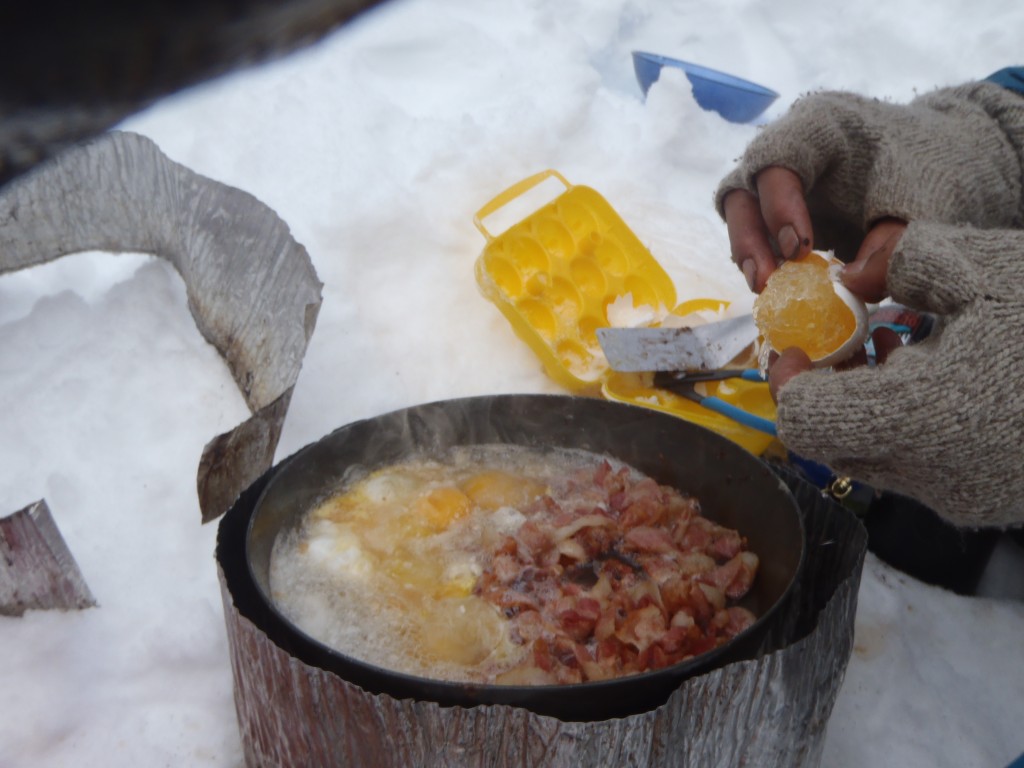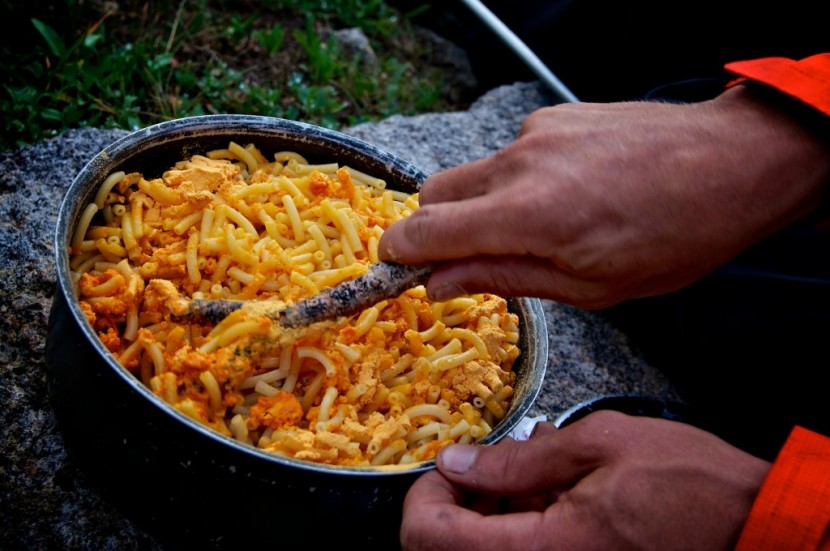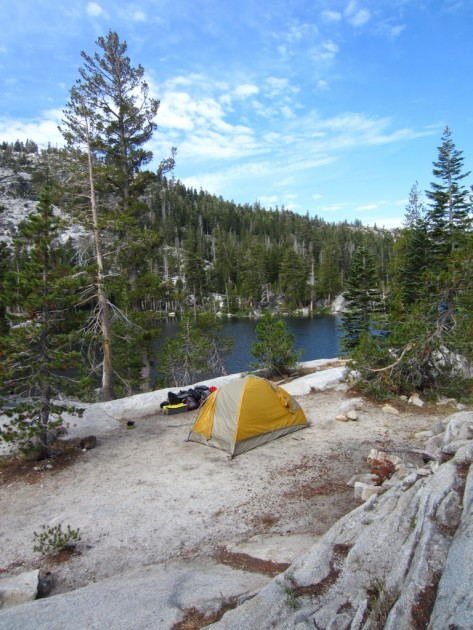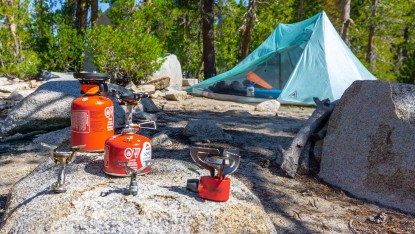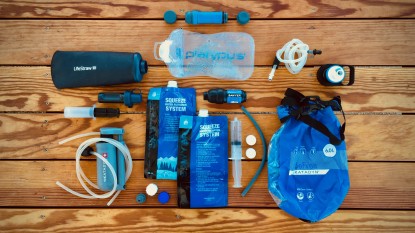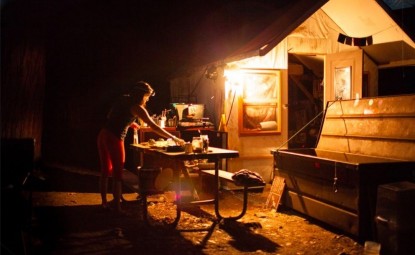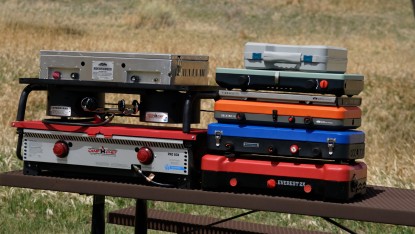What is the best backpacking food to take on your next adventure? Eating well while backpacking isn't easy, but it can be done. And when you master some essentials, the reward can be well worth any effort expended. Our testers have spent years learning to cook well in the wilderness. Here for the benefit of your 2019 backcountry adventures are what they have learned.,
Here are our top on-the-go grub suggestions. For more involved gourmet cooking ideas, especially for car campers, check out see our Camping Food Recommendations
Cook Systems
A big step forward comes when you opt for an integrated cook system like the Jetboil Flash or the MSR Reactor, which are common on the trails. With one of these, most menu items need only hot water. While you won't move much past boiling, you get that done without adding much weight to your pack. Moving up, a liquid fuel stove or small canister stove is compact, efficient and light, while exceptionally versatile. A liquid fuel stove such as the MSR Dragonfly or a small canister stove such as the Soto Windmaster OD-1RX lets you eat much like you would at home, as long as you don't mind packing a bunch of ingredients. These stoves let you move from boiling water to baking to sautéing. With either cook system, keeping your meals to a single pot or two will ease the time and effort needed for prep and cleanup. Check out our side-by-side comparisons of the top backpacking stoves in The Best Backpacking Stove Review and also How to Choose a Backpacking Stove.
How much food should you pack?
Consider three things when meal planning: the trip's duration, its characteristics such as location and also the time of year. These three things determine how much food to pack, what types of food, and how to prep and store the food. During the summer, 1-1.5 pounds per person per day is a sound guideline. For winter, increase that by one-half to a full pound per person per day. High calorie and fatty foods such as cheese, potatoes and bacon are good for keeping you warm and energized. Be sure to pack enough food to satisfy your calorie-burning adventure but not so much to weight yourself down. Having a little bit extra is better than running out.
Balancing your diet can help maintain energy levels, maintain or improve morale, regulate your digestive system, and even keep you warm in cold weather. Balance dry foods such as dehydrated soups and pasta, fresh vegetables and fruits (when possible), dried vegetables and fruits, cheese and meats such as jerky or sausage. Electrolyte tablets or packets, such as Nuun Active Hydration, keep you hydrated.
Save weight by including as many energy-dense foods as possible. Examples: oils, butter, nuts and chocolate. This chart shows energy density in calories per 100 grams. A good addition: bring a bottle of olive oil and sprinkle it liberally on foods that will take it (soups, most dehydrated entrees, quesadillas, etc). Butter works also but is harder to transport and apply.
Favorite Backpacking Recipes and Ideas
We consider our weight and are mindful of food choices, but don't follow strict lightweight guidelines. We carry cheese and fresh produce when possible and don't just bring dehydrated, just-add-water meals. If you prefer dehydrated, pre-packaged meals, try Backpackers Pantry or Mountain House.
Morning:On the move, high mileage days: Granola bar, protein bar, energy bar, Nature's Bakery Fig Bars, Honey Stinger.
Best Cooking System: none
Oatmeal, grits, Farina (Cream of Wheat), minute rice, or quinoa — Cook grains in boiling water. Add butter (condiment packets are great), dried fruit such as blueberries or strawberries, fresh apples, nut butters, and/or powdered milk. Adding cinnamon is a winner.Best Cooking System: integrated canister stove, small canister stove, or liquid fuel stove
Tip: If you prefer oatmeal, skip buying the flavored packets and measure out a portion for each day into one Ziploc bag. This minimizes trash and lets you to add sugar, spices and berries. Each morning, pour out a single portion.
Rest Day or on days with short objectives: Potatoes with veggies, bacon, cheese and optional dehydrated egg. Potatoes can be fresh, dehydrated or even frozen hash browns. In the winter, you can safely carry frozen foods for a day or two. Add onions, green onion, zucchini squash, bell peppers or frozen corn. Add cheese or egg once the vegetables are cooked.Best Cooking System: liquid fuel stove or small canister stove
Tip: when planning trips in cold climates and during winter months, pre-chop all vegetables before leaving home. Frozen onion is tough to manage in the mountains. Bacon is also best pre-cooked at home; the fat and salt content preserves bacon in the field for a few days.
Noon: On-trail snacks and meals should be stress-free. That way you can put your energy into hiking and taking in the landscape. In the morning, pack so your on-trail foods are easily accessible. Pick foods that require no cooking so you can keep your stove stashed until dinner.
Prepare at home (or no preparation necessary):Bars, dried fruit, jerky. Decide on your favorites before heading out on the trail; experiment at home rather than in the backcountry.
Homemade trail mix. Also known as GORP (Good Ol' Raisins and Peanuts), trail mix is one of the best on-trail snacks and offers a lot of nutrition per handful. Almonds, walnuts, peanuts and sunflower seeds are some of the highest calorie items. Add raisins, dried cranberries or your favorite dried fruit. Chocolate is a great addition to your trail mix; we like chips of dark chocolate because they don't melt as quickly as milk chocolate.
Morning preparation or easy on-trail preparation:Cheese and salami on a calorie-dense bread or bagel (use a little olive oil or butter for extra energy density). Tortillas are versatile. You can wrap your breakfast, smear them in nut butter, and serve alongside pasta at night. For enjoying during the day, pre-make bean and cheese burritos or nut butter wraps. Cheddar cheese or string cheese are great options. Cheddar is a fatty cheese and individually wrapped mozzarella string cheeses are convenient. These two types of cheese can last three-plus days in your pack, unless you are traveling in mid-summer high heat temperatures. For nut butter wraps, add sliced apple or dried fruit.
Vegetables. Carrots and bell pepper are trail-worthy vegetables to enjoy on their own, wrapped in a tortilla, or tossed into soup. They are not likely to get crushed in your pack and they remain fresh for days.
Night:Long day. For high mileage days, simple dinners are great. A good option is add-water soup with additional vegetables (fresh, dried, or dehydrated) and spices such as garlic powder, cayenne or Italian herbs. Try Sierra Soups with vegan, gluten-free, all-natural ingredients.
Best Cooking System: Integrated canister stove
Noodles. Remember when your high school coach advised a pasta dinner before race day? For the same reasons, a noodle based dinner is great for adding calories to your tired body. Sauce them, spice them, melt cheese over them, or add peanut butter and vegetables with hot sauce for a Thai inspired dinner.
Best Cooking System: small canister stove or liquid fuel stove
Backcountry extravagance. Pizza in the backcountry is a treat. Pack a bag of pre-measured flour; for the average sized backpacking pot, measure one cup of flour per pizza with a generous pinch of yeast stored in a separate container. At camp, mix flour and yeast with water until dough-like. Grease the pan with olive oil or other preferred oil. Spread the dough into the bottom of the pan and top with sauce (foil packets of pasta sauce are convenient), vegetables, and cheese — string cheese or Parmesan are great options. Cover the pan with a lid.Set up your stove with a large rock on the outside edge; the rock should create a level surface with the stove. Place the pizza pan on the stove with only a third of the pan receiving direct heat and the other portion of the pan balancing on the rock. Continuously rotate the pan — this is called the “Around the clock” method. Depending on the dough thickness and amount of toppings, fresh “baked” pizza takes anywhere from 15 to 45 minutes. By evenly distributing the heat with this method, you are able to mimic a baking oven.
Best Cooking System: liquid fuel stove
Brownies: Using a pre-packaged brownie mix or prepping dry brownie mix at home, combine with vegetable oil (in place of egg) or applesauce packets (doubles as a mid-day snack) and water. Use the “Around the clock” method as instructed above.Best Cooking System: liquid fuel stove
Tip: Add dried berries or caramels for decadence.
For more information on backpacking, check out our best backpacking backpack review for men or our write-up of the top women's backpacking backpacks, and our backpacking checklist for the highest rated tents, water filtration systems, cooking pots and more.
If you have quite a bit more space in your pack or if you are car camping, check out the Best Camping Food article for more tips and tricks!
